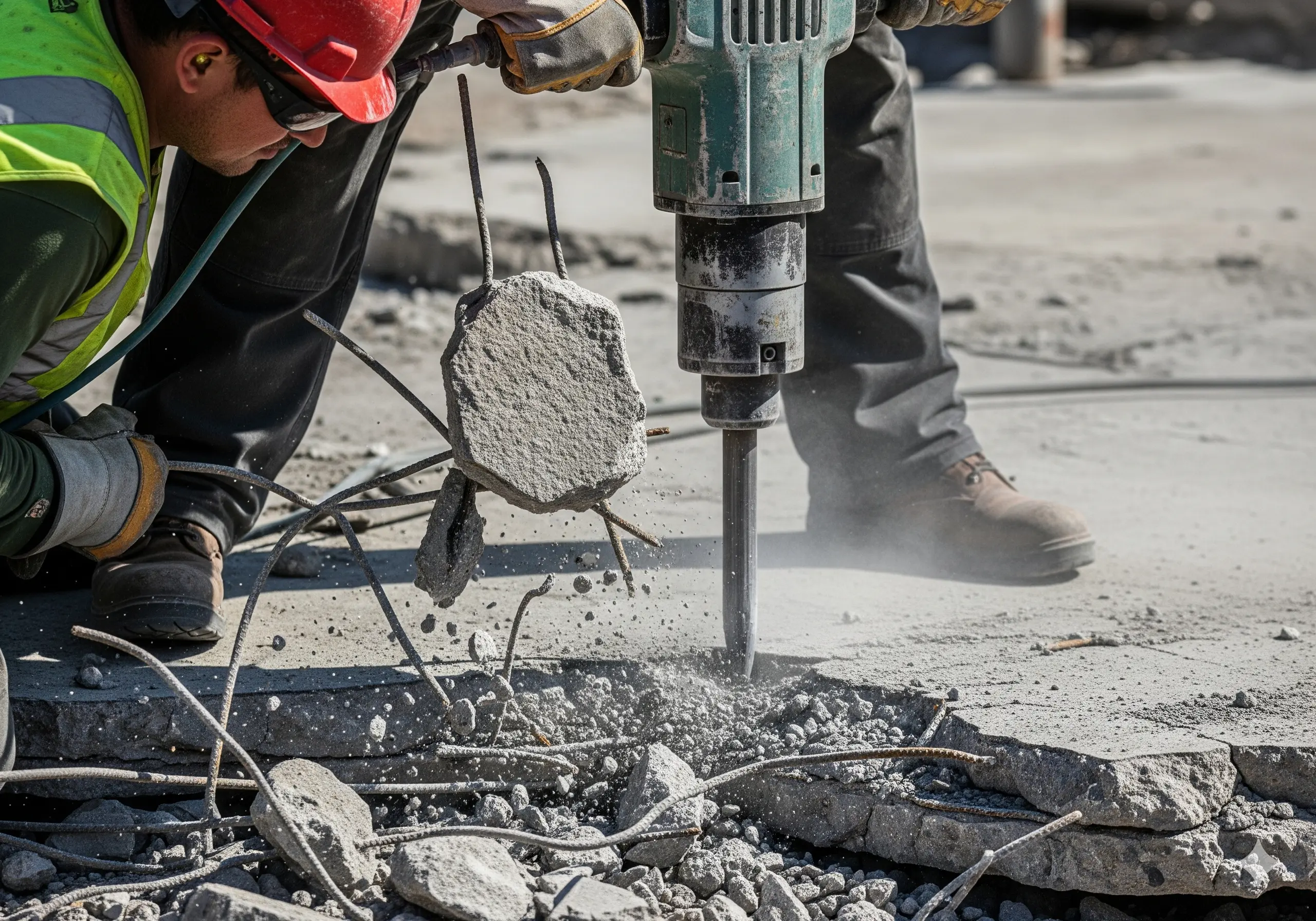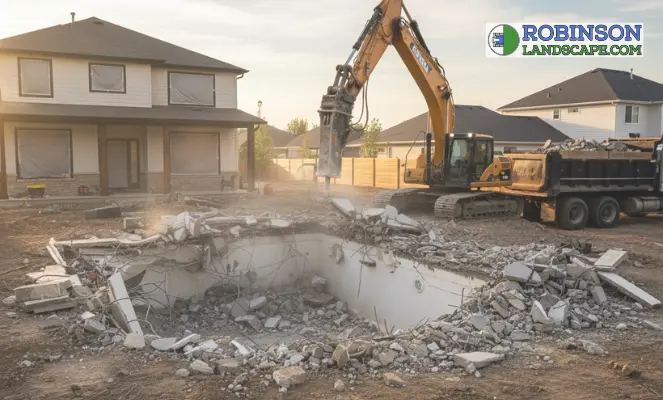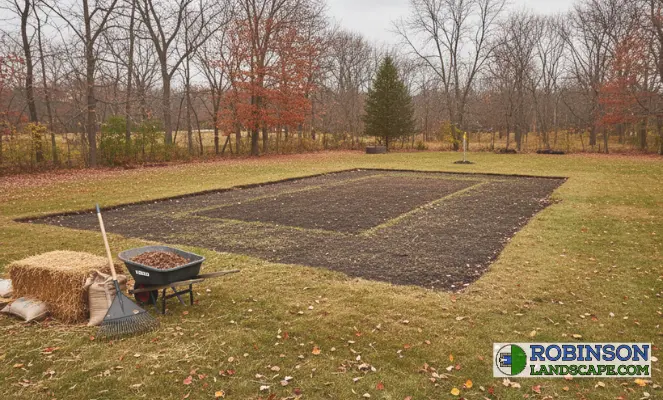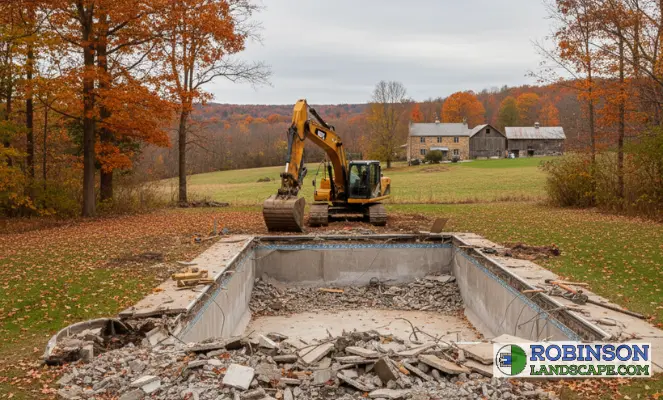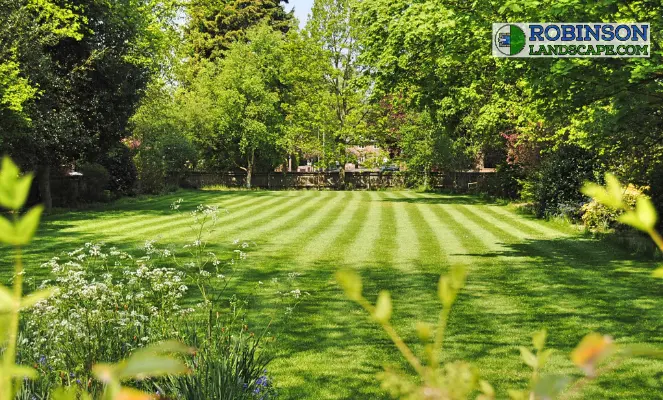When and why you should remove old or damaged concrete depends on safety hazards, structural integrity, and property functionality, with Robinson Landscape providing expert concrete removal services throughout Southeastern Pennsylvania since 2000. Concrete removal becomes necessary when surfaces develop extensive cracking, spalling, settling, or pose safety risks that repairs cannot adequately address. Tim Robinson, owner and founder of Robinson Landscape LLC with 24+ years of concrete removal expertise, identifies critical warning signs including trip hazards exceeding one inch, foundation damage from shifting slabs, and drainage problems caused by improperly graded concrete surfaces. Professional concrete removal in Bucks County and Montgomery County requires specialized equipment and expertise to safely demolish and dispose of materials while protecting surrounding structures and utilities.
Table of Contents
- What Is Concrete Removal and When Is It Necessary?
- Critical Signs Your Concrete Needs Removal
- Safety Hazards of Damaged Concrete
- Concrete Removal vs. Repair: Making the Right Decision
- The Concrete Removal Process
- Cost Factors and Property Value Impact
- Local Considerations for Pennsylvania Residents
- FAQs About Concrete Removal
- Expert Tips from Tim Robinson
What Is Concrete Removal and When Is It Necessary?
Concrete removal involves the complete demolition and disposal of damaged or deteriorated concrete structures including driveways, patios, sidewalks, foundations, and pool decks that no longer serve their intended purpose or pose safety risks. Robinson Landscape specializes in concrete removal throughout Southeastern Pennsylvania, utilizing professional-grade equipment and techniques to safely demolish concrete structures while minimizing property disruption.
When concrete surfaces develop structural failures beyond economical repair, removal becomes the most practical solution for property owners in Bucks County and Montgomery County communities. The decision to remove concrete typically occurs when damage affects more than 30% of the surface area, when underlying soil problems cause repeated failures, or when renovation plans require complete reconstruction. Professional concrete removal ensures proper handling of materials, with Robinson Landscape recycling demolished concrete whenever possible to reduce environmental impact.
The timing of concrete removal often coincides with property improvements, emergency repairs, or seasonal maintenance schedules. Spring and fall provide optimal conditions for concrete removal in Southeastern Pennsylvania, offering moderate temperatures that facilitate both demolition work and subsequent construction projects. Property owners in communities like Doylestown, Newtown Township, and Horsham frequently schedule concrete removal as part of comprehensive property upgrades.
Concrete deterioration accelerates when initial damage goes unaddressed, making early intervention crucial for cost management. Water infiltration through cracks causes freeze-thaw damage during Pennsylvania winters, while summer heat expansion worsens existing structural problems. Tim Robinson’s expertise shows that proactive concrete removal prevents cascading property damage that can affect foundations, landscaping, and drainage systems throughout properties in Southeastern Pennsylvania.
Critical Signs Your Concrete Needs Removal
Identifying when concrete removal becomes necessary requires understanding key deterioration indicators that signal structural failure beyond repair capabilities. Robinson Landscape’s 24+ years serving Southeastern Pennsylvania reveals consistent patterns in concrete failure that property owners should monitor carefully.
Extensive cracking patterns, particularly spider-web configurations or cracks exceeding quarter-inch width, indicate underlying structural problems requiring concrete removal rather than surface repairs. These crack patterns often result from soil settlement, inadequate base preparation, or freeze-thaw cycles common in Bucks County’s climate. When cracks allow water penetration to base materials, the damage compounds exponentially, making removal the only viable solution.
Spalling and scaling concrete surfaces, where the top layer delaminates or flakes away, signal advanced deterioration requiring professional removal. This condition frequently affects driveways and sidewalks throughout Montgomery County communities exposed to road salt and de-icing chemicals. Robinson Landscape encounters severe spalling cases where concrete thickness reduces by 20-30%, compromising structural integrity beyond repair thresholds.
Significant settling or heaving creates elevation changes that pose serious safety hazards and drainage problems. Properties along the Route 611 corridor and near Neshaminy Creek often experience soil-related settling that causes concrete slabs to sink or tilt dramatically. When elevation differences exceed two inches or create negative drainage toward structures, immediate concrete removal prevents water damage to foundations and basements.
Exposed reinforcement steel or rebar indicates critical structural compromise requiring immediate attention. Rust expansion causes concrete to crack and separate from reinforcement, creating dangerous conditions that repairs cannot adequately address. Tim Robinson emphasizes that exposed steel accelerates deterioration through oxidation, making prompt concrete removal essential for safety and preventing further property damage throughout Southeastern Pennsylvania properties.
Safety Hazards of Damaged Concrete
Damaged concrete creates multiple safety hazards that expose property owners to liability risks and potential injuries, making timely removal essential for properties throughout Southeastern Pennsylvania. Robinson Landscape prioritizes identifying and eliminating concrete-related safety hazards that threaten residents and visitors.
Trip and fall hazards from uneven concrete surfaces represent the primary safety concern, with elevation changes as small as half an inch causing serious accidents. Insurance claims data from Bucks County properties shows that concrete-related falls account for significant liability expenses, particularly in high-traffic areas like sidewalks and entrance paths. Professional concrete removal eliminates these hazards completely rather than attempting temporary fixes that fail over time.
Unstable concrete structures pose collapse risks that endanger people and property, especially with elevated surfaces like porches or retaining walls. Robinson Landscape has responded to emergency concrete removal situations throughout communities including Perkasie, Lansdale, and Warminster where structural failures threatened adjacent buildings. These scenarios require immediate professional intervention to prevent catastrophic failures.
Sharp edges and protruding fragments from broken concrete create cutting hazards particularly dangerous for children and pets. Deteriorating pool decks and play area surfaces throughout Montgomery County neighborhoods present ongoing injury risks until complete removal addresses the root problem. Tim Robinson’s experience shows that attempting to grind or patch sharp edges provides only temporary solutions before concrete continues deteriorating.
Water pooling on damaged concrete surfaces creates slip hazards year-round, with ice formation during Pennsylvania winters multiplying danger levels. Improperly draining concrete around pools, patios, and walkways in communities like Lower Makefield and Cheltenham requires removal and regrading to establish proper drainage patterns. Robinson Landscape’s comprehensive approach addresses both concrete removal and site drainage to eliminate recurring safety issues.
Concrete Removal vs. Repair: Making the Right Decision
Determining whether concrete requires complete removal or can benefit from repairs involves evaluating damage extent, underlying causes, and long-term cost effectiveness for Southeastern Pennsylvania property owners. Robinson Landscape provides honest assessments helping homeowners make informed decisions about concrete removal versus repair options.
When damage affects less than 25% of surface area and remains superficial, repairs may provide adequate solutions, but extensive deterioration typically makes removal more economical long-term. Surface repairs like crack filling or resurfacing work for minor cosmetic issues, but structural problems require complete removal. Tim Robinson’s 24+ years of experience indicates that attempting repairs on severely damaged concrete often results in recurring problems and higher cumulative costs.
Age factors significantly into removal decisions, with concrete over 20-30 years often reaching end-of-life regardless of visible condition. Older concrete in Bucks County communities like Doylestown Borough and Newtown frequently lacks proper reinforcement or adequate base preparation by modern standards. Robinson Landscape evaluates concrete age alongside damage assessment to recommend cost-effective solutions.
Underlying soil problems make repairs futile without addressing root causes through complete removal and base reconstruction. Properties throughout the Route 313 corridor and areas near Peace Valley Park experience clay soil expansion and contraction that repeatedly damages concrete regardless of surface repairs. Professional concrete removal allows for proper base preparation that prevents future failures.
Cost comparison between extensive repairs and complete removal often favors removal when considering five-year expenses. Multiple repair attempts on failing concrete in communities like Horsham and Abington typically exceed single removal and replacement costs. Robinson Landscape provides transparent pricing comparisons helping property owners understand long-term financial implications of removal versus ongoing repairs throughout Southeastern Pennsylvania.
The Concrete Removal Process
Professional concrete removal follows systematic procedures ensuring safe, efficient demolition while protecting surrounding property and managing material disposal responsibly. Robinson Landscape’s proven process, refined over 24+ years serving Southeastern Pennsylvania, minimizes disruption while maximizing safety and efficiency.
Initial assessment and utility marking represent critical first steps in concrete removal projects throughout Bucks County and Montgomery County properties. Robinson Landscape coordinates with PA One Call to identify underground utilities before any demolition begins. This crucial safety step prevents damage to gas lines, water mains, electrical cables, and telecommunications infrastructure common beneath concrete surfaces.
Equipment selection depends on concrete thickness, reinforcement type, and proximity to structures requiring protection. Robinson Landscape utilizes specialized concrete saws, jackhammers, and excavators appropriate for each project’s unique requirements. Residential concrete removal in communities like Perkasie and Hilltown often requires smaller equipment to navigate tight spaces while maintaining precision control.
Demolition proceeds systematically, breaking concrete into manageable sections for efficient removal and recycling. Dust suppression measures protect air quality, particularly important in densely populated areas of Lower Southampton and Bensalem. Tim Robinson’s crews follow OSHA safety protocols throughout demolition, ensuring worker and property protection during concrete removal operations.
Site restoration following concrete removal includes base material evaluation, grading adjustments, and preparation for new surfaces or landscaping. Robinson Landscape addresses drainage issues discovered during removal, preventing future problems for Southeastern Pennsylvania properties. Complete cleanup and material recycling conclude the process, with demolished concrete processed at approved facilities for reuse in new construction projects throughout the region.
Cost Factors and Property Value Impact
Concrete removal costs vary based on multiple factors specific to each project, with Robinson Landscape providing transparent pricing for Southeastern Pennsylvania property owners. Understanding cost components helps homeowners budget effectively for necessary concrete removal projects.
Square footage and concrete thickness primarily determine removal costs, with typical pricing ranging from $2-8 per square foot for standard residential concrete in Bucks County. Thicker concrete requiring heavy equipment or reinforced structures with rebar increase costs due to additional labor and disposal requirements. Robinson Landscape’s detailed estimates account for all project variables affecting final pricing.
Accessibility significantly impacts concrete removal costs, with confined spaces or elevated surfaces requiring specialized equipment and techniques. Properties in older communities like Doylestown and Newtown Township often present access challenges that affect project pricing. Tim Robinson’s experience enables accurate cost assessment considering all accessibility factors unique to Southeastern Pennsylvania properties.
Disposal and recycling fees contribute to overall project costs, though Robinson Landscape’s commitment to environmental responsibility includes recycling concrete whenever possible. Montgomery County recycling facilities accept clean concrete for processing into aggregate materials, reducing disposal costs compared to landfill options. Transportation distances from properties to processing facilities influence final disposal pricing.
Property value improvements from concrete removal often exceed project costs, particularly when eliminating safety hazards or improving curb appeal. Real estate professionals throughout Southeastern Pennsylvania recognize that damaged concrete deters buyers and reduces property values significantly. Robinson Landscape’s complete concrete removal and site restoration services help properties in communities like Lower Makefield and Buckingham Township maximize market value through improved aesthetics and functionality.
Local Considerations for Pennsylvania Residents
Pennsylvania residents face unique challenges with concrete deterioration due to regional climate patterns and soil conditions requiring specialized removal approaches. Robinson Landscape’s extensive experience throughout Southeastern Pennsylvania addresses location-specific factors affecting concrete removal projects.
Freeze-thaw cycles characteristic of Pennsylvania winters cause accelerated concrete deterioration requiring more frequent removal compared to moderate climates. Bucks County experiences average temperature fluctuations of 40-50 degrees between day and night during transition seasons, creating ideal conditions for freeze-thaw damage. Robinson Landscape schedules concrete removal during optimal weather windows to ensure successful project completion and site restoration.
Local township regulations throughout Montgomery County and Bucks County require specific permits for concrete removal projects exceeding certain thresholds. Communities including Warminster, Horsham, and Abington enforce ordinances governing demolition work, noise restrictions, and material disposal. Robinson Landscape maintains current knowledge of municipal requirements, handling permit applications and ensuring regulatory compliance for all concrete removal projects.
Soil composition throughout Southeastern Pennsylvania, particularly clay-heavy areas along the Neshaminy Creek watershed, creates unique challenges for concrete stability. These soil conditions often necessitate complete concrete removal rather than repairs due to ongoing movement and settlement issues. Tim Robinson’s expertise includes evaluating soil conditions and recommending appropriate base preparation following concrete removal.
Environmental regulations from the Pennsylvania Department of Environmental Protection govern concrete disposal and recycling requirements. Robinson Landscape follows state guidelines for managing concrete containing hazardous materials like lead paint or asbestos, common in older structures throughout communities like Perkasie and Lansdale. Proper handling and disposal protect both property owners and the environment while ensuring regulatory compliance.
Historical preservation considerations in certain Southeastern Pennsylvania communities may affect concrete removal permissions for properties within designated districts. Areas of Doylestown Borough and Newtown maintain historical character requiring special approvals for exterior modifications including concrete removal. Robinson Landscape works with property owners navigating preservation requirements while addressing necessary concrete removal needs.
FAQs About Concrete Removal
Q: When should you remove old or damaged concrete instead of repairing it?
You should remove old or damaged concrete when cracks exceed quarter-inch width, damage affects more than 30% of the surface, settling creates elevation changes over two inches, or when repairs would cost more than 50% of replacement value. Robinson Landscape’s 24+ years serving Southeastern Pennsylvania shows that removal becomes necessary when structural integrity is compromised or safety hazards exist that repairs cannot adequately address.
Q: How much does concrete removal cost in Bucks County?
Concrete removal in Bucks County typically costs $2-8 per square foot depending on thickness, reinforcement, and accessibility, with average driveway removal projects ranging from $1,500-4,000. Robinson Landscape provides free estimates considering all project factors including disposal fees and site restoration requirements specific to Southeastern Pennsylvania properties.
Q: What equipment is used for residential concrete removal?
Residential concrete removal utilizes concrete saws, jackhammers, skid steers, and mini-excavators sized appropriately for property access and concrete thickness. Robinson Landscape selects equipment based on project requirements, ensuring efficient removal while protecting surrounding landscaping and structures throughout Montgomery County and Bucks County communities.
Q: Can broken concrete be recycled after removal?
Yes, Robinson Landscape recycles demolished concrete at approved processing facilities throughout Southeastern Pennsylvania, where it’s crushed into aggregate for new construction projects. Clean concrete without contaminants qualifies for recycling, reducing disposal costs and environmental impact while supporting sustainable construction practices.
Q: How long does concrete removal take for a typical driveway?
Concrete removal for average residential driveways takes 1-2 days including demolition, loading, and site cleanup, though larger or complex projects may require additional time. Robinson Landscape’s efficient processes and experienced crews minimize disruption for homeowners in communities like Doylestown, Newtown, and Horsham.
Q: Do I need permits for concrete removal in Pennsylvania?
Most Pennsylvania townships require demolition permits for concrete removal projects, with specific requirements varying by municipality and project scope. Robinson Landscape handles permit applications for clients, ensuring compliance with local regulations throughout Bucks County and Montgomery County.
Q: What happens to the ground after concrete removal?
After concrete removal, Robinson Landscape evaluates and prepares the base material, addresses any drainage issues, and grades the area for new surfaces or landscaping. Proper site preparation following removal prevents future settling and ensures successful installation of replacement surfaces or lawn areas.
Q: When is the best time of year for concrete removal in Southeastern Pennsylvania?
Spring and fall provide optimal conditions for concrete removal in Southeastern Pennsylvania, with moderate temperatures and lower rainfall facilitating efficient work and site restoration. Tim Robinson recommends scheduling projects during these seasons to avoid winter freezing and summer heat that can complicate removal and reconstruction.
Q: Can concrete removal damage underground utilities?
Professional concrete removal includes mandatory utility marking through PA One Call to prevent damage to underground services. Robinson Landscape follows strict safety protocols identifying and protecting all utilities before beginning demolition work on any Southeastern Pennsylvania property.
Q: How do I know if my concrete contains hazardous materials?
Concrete installed before 1980 may contain hazardous materials requiring special handling during removal. Robinson Landscape can arrange testing for properties in older communities throughout Bucks County and follows all environmental regulations for safe disposal when hazardous materials are present.
Expert Tips from Tim Robinson
With 24+ years of concrete removal experience throughout Southeastern Pennsylvania, Tim Robinson shares professional insights helping property owners make informed decisions about concrete removal projects. These recommendations ensure successful outcomes while maximizing value and minimizing disruption.
Schedule concrete removal during dry weather periods for optimal working conditions and site access. Pennsylvania’s spring and fall seasons typically provide ideal weather windows, though Robinson Landscape monitors forecasts carefully to avoid rain delays. Planning projects during favorable weather reduces complications and ensures proper site restoration following removal.
Document existing concrete conditions thoroughly before removal begins, including photographs and measurements of problem areas. This documentation proves valuable for insurance claims, permit applications, and planning replacement surfaces. Properties in communities like Perkasie and Lansdale benefit from detailed records showing pre-existing conditions and justification for removal.
Consider future property uses when planning concrete removal to optimize site preparation for new installations. Many Southeastern Pennsylvania homeowners transform removed driveway areas into landscaped gardens or expand lawn space. Robinson Landscape can grade and prepare sites according to future plans during the removal process, saving time and money compared to separate projects.
Coordinate concrete removal with other property improvements to maximize equipment efficiency and minimize disruption. Combining concrete removal with projects like pool removal, landscaping, or drainage improvements reduces overall costs through shared mobilization and equipment usage. Tim Robinson helps clients throughout Bucks County and Montgomery County identify opportunities for project consolidation.
Start Your Concrete Removal Project Today
Eliminate safety hazards and restore your property’s functionality with Robinson Landscape’s professional concrete removal services throughout Southeastern Pennsylvania. Our experienced team, led by Tim Robinson with 24+ years of expertise, safely removes damaged concrete while preparing sites for beautiful new surfaces or landscaping. From emergency removal to planned renovations, we handle all aspects including permits, demolition, recycling, and site restoration for properties in Bucks County and Montgomery County. Don’t let deteriorating concrete compromise your property’s safety and value – contact Robinson Landscape today at (215) 292-6572 or email tim@robinsonlandscape.com for your free concrete removal estimate. We serve all communities throughout Southeastern Pennsylvania with licensed, insured, and environmentally responsible concrete removal solutions.
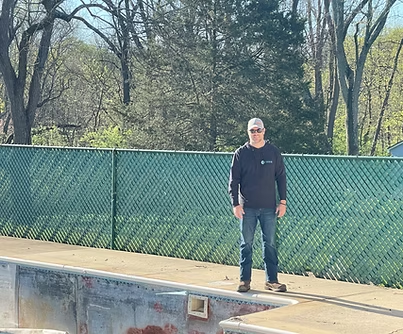
Tim Robinson is the owner of Robinson Landscape LLC, proudly serving Bucks and Montgomery Counties for over 24 years. Known for his strong work ethic, clear communication, and reliability, Tim brings passion and professionalism to every job. When he’s not working, he enjoys time with his wife, two kids, and their family dog.

